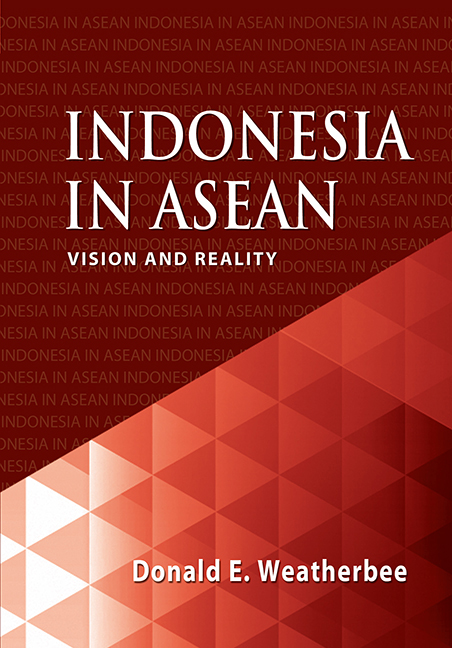Book contents
- Frontmatter
- Contents
- Editorial Note
- Acknowledgements
- About the Author
- Introduction
- I The Visible Indonesia
- II Indonesian Policy Foundations
- III Democracy in Indonesian Foreign Policy
- IV Islam in Indonesian Foreign Policy
- V Indonesia, ASEAN and Regional Political Stability and Security
- Conclusion
- Addendum
- End Notes
- References
II - Indonesian Policy Foundations
Published online by Cambridge University Press: 21 October 2015
- Frontmatter
- Contents
- Editorial Note
- Acknowledgements
- About the Author
- Introduction
- I The Visible Indonesia
- II Indonesian Policy Foundations
- III Democracy in Indonesian Foreign Policy
- IV Islam in Indonesian Foreign Policy
- V Indonesia, ASEAN and Regional Political Stability and Security
- Conclusion
- Addendum
- End Notes
- References
Summary
The basic conception of how Indonesian foreign policy should be formulated and carried out was laid out more than six decades ago by Vice-President and Prime Minister Mohammad Hatta in a government statement to Indonesia's provisional parliament. The speech was titled Mendayung diantara Dua Karang — “rowing between two reefs”. It is rightly considered the foundation of Indonesian foreign policy. The two reefs at that time were the Cold War reefs of the Soviet Union and the United States of America. The domestic context for the speech was the rivalry for power between the communist left and the democratic socialists.
Hatta's prescription for navigating the reefs was a foreign policy that was bebas dan aktif (independent and active). Every Indonesian government from Sukarno to Yudhoyono has claimed bebas dan aktif as the foundation of its foreign policy. Bebas dan aktif is not a policy or strategy. It is a quality of policy in the way it is formulated and carried out: with national interests being defined independently (bebas), then pragmatically promoting those interests (aktif). This is not ideology; it is realism, particularly if we pay attention to Hatta's insistence that interests had to be pragmatic and pursued in accordance with the realities Indonesia faced in the external environment.
For contemporary Indonesia we could restate Hatta's title as Mendayung diantara Banyak Karang — rowing between many reefs. On an updated political navigation chart the great-power reefs of China and the United States are prominent, but there are hazards unseen by the founders of Indonesia's republic such as nationalism and globalism; environmentalism and development; religion and terrorism, to mention a few. There are also a host of what former foreign minister Hassan called “intermestic” issues where there is a confluence of non-traditional issues at the international–domestic policy interface including human rights and national integrity. Even in ASEAN there are reefs: the differing political, strategic, and economic orientations of the continental and maritime members or the tiered economic division between the more economically developed members and the CLMV states.
- Type
- Chapter
- Information
- Indonesia in ASEANVision and Reality, pp. 11 - 20Publisher: ISEAS–Yusof Ishak InstitutePrint publication year: 2013

